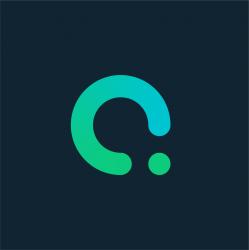Starting a digital product development project without first engaging in a discovery phase is like kicking an anthill: thousands of situations will be triggered, and a complete mess will follow. That’s why this is the first step in the Making Sense development framework: discovery is the synchronization phase to ensure everyone is on the same page when the project’s true north is defined.
This is when our team of experts meets with the client and initiates a research, definition, and design process that quickly creates harmony to understand the current state of affairs and the point they want to reach. The scope of the solution to be built should be drafted by assessing the time the project will take and the number and type of professionals needed by creating the documentation to ensure that decisions are made based on data.
This is a two-stage process: the fact-finding phase, which consists of research, interviews, and listening sessions, and the solution-making phase, which addresses the technology architecture, the business definitions, and the digital product solution.
Deep business understanding
Beyond definitions, discovery is fundamental to adding value to the project. It is when the Making Sense team gains a deep understanding of the business. In the case of an existing product or service, from what it offers to who its customers are, including the differential value of its proposition, the channels through which it interacts with its customers, the relationship and customer service models, the structure of the value chain, or the challenges posed by the competition. In the case of a startup, we help build a differentiated value proposition.
This way, we understand how technology can add value and ensure the project perfectly aligns with the business. Clients often think they know what they need from a purely functional point of view (“an app that does these things”). Still, after discovery, opportunities emerge that go far beyond that initial scope or are better aligned with the business objectives.
Technology, Business, and User Experience
Discovery leaves no stone unturned: through workshops and interviews, it consults all stakeholders, from the organization’s leaders interested in the project to the end users of the digital products, or even those who perform manual tasks that could be affected by the new development. The dynamics of these meetings move along three cross-cutting and integrated highways: technology, business, and user experience.
It also functions as a mediation space within the organization itself. It aligns objectives between leaders from different areas. Not everyone has the same goals. Selecting the right ones, based on business priority parameters, feasibility or budget issues, and communicating them to stakeholders is a real challenge.
The result of discovery is the overall definition of the solution that delivers the most value to the customer.
The process takes no more than a month. The various deliverables include a graphical solution (an interactive prototype) that broadly reflects the team’s vision and simplifies understanding of how the solution will work. It also provides a roadmap, a sort of compass that aligns the goals of the parties, tries to transform the problems or opportunities identified into solutions, indicates where the north of the project lies, and avoids the typical waste of time or money that occurs when definitions are weak, ambiguous, or gray in the early stages. The roadmap is not set in stone. It guides without conditioning and is flexible despite potential changes or further discovery.
In conclusion, discovery is critical in organizing the team, giving the project a direction with the highest degree of certainty, and multiplying the probability of success.
